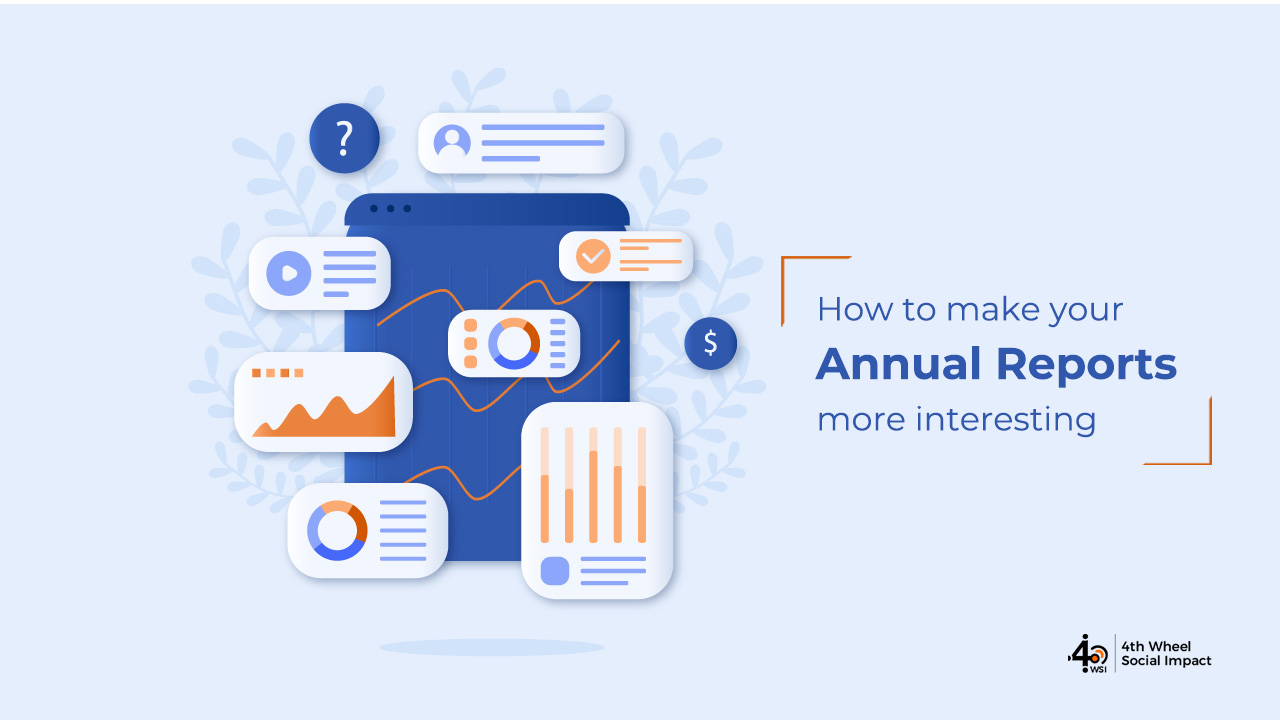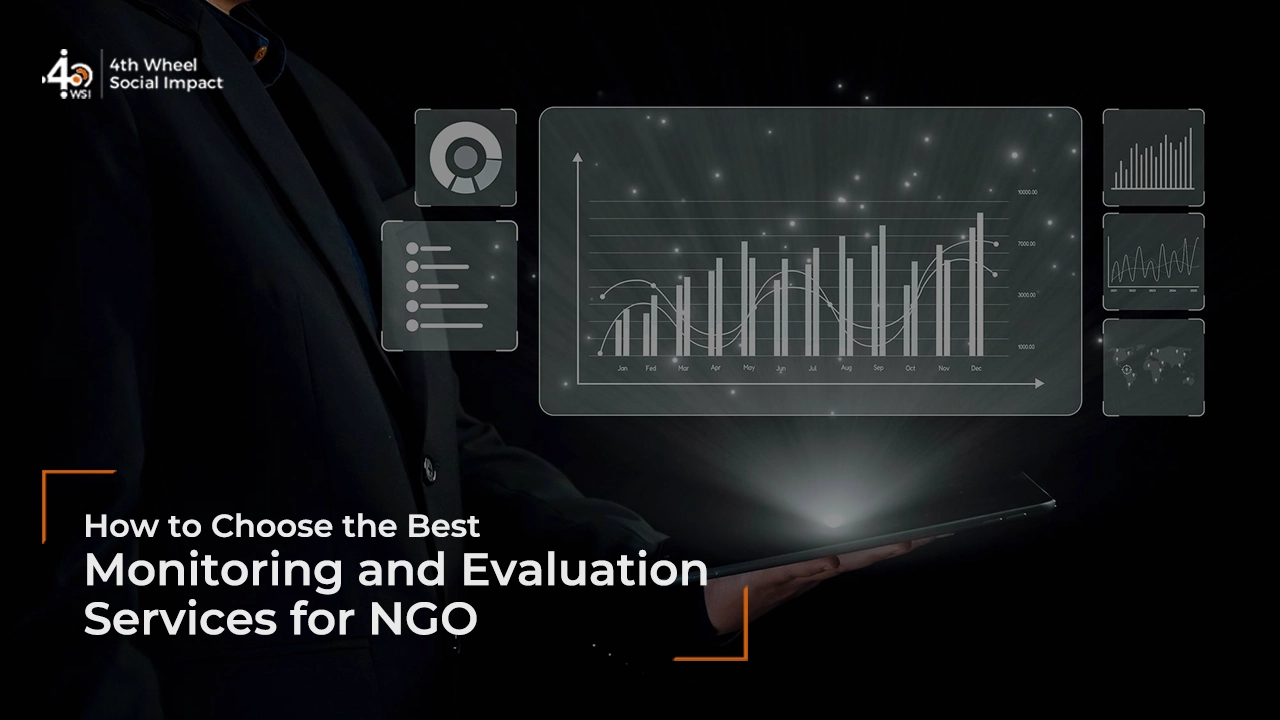Be it the development, corporate, government, or any other service sector, annual reporting of work, achievements, and profits are considered a minimum mandate. Very often writing annual reports is seen as an ‘annual grind’ to meet the minimum requirements put down in company/society registration acts, give an account of funds to donors, and a way to document all the hard work for the year. While all of this may be true, why not have fun while you are at it.
This article explores different annual report concepts you could use to not only make the reporting process fun for you and your team but to make your report stand out and get noticed.
1.INFOGRAPHIC REPORTS
Presenting annual information in the form of an infographic will make your data look cool and your business serious. Infographics could be designed to depict overall work, outreach, and achievement for the year. Each project or domain of work could be further detailed using infographic representation.
How it adds value – Visualizing data through infographics will improve your report’s readability and increase the reader’s involvement in the organisation’s achievements and issues.
Be careful that you don’t – Don’t fall into the trap of backing your infographics with long and exhaustive narratives. Design your infographic in a way that it speaks for itself.
2. ILLUSTRATED REPORTS
This will certainly ensure that you are not doing dull when it comes to your annual report. A colourful and playful way of presenting work and outreach, illustrated annual reports move even beyond data visualisation through pie charts, graphs, and infographics. It plays on the concept of ‘dramaturgy’ which is not the usual and oft taken road for professional reporting. An illustrated report can stand out even more by using local art forms to create illustrations. In a country as diverse as India, with each region having its own unique culture, illustrations using local art forms can add the much-needed spunk to your annual report.
How it adds value – While it can be used universally, illustrated reports are ideal report design choices for organisations working primarily with children. This will ensure that your primary stakeholders (children) can read and enjoy your report.
Be careful that you don’t – Don’t make your illustrated report visually exhausting and overwhelming for the reader. Space your illustrations well and ensure that there is not too much happening at the same time.
See our annual reports for references.
3. INTERACTIVE WEBSITES
A shift from paper-based annual reports is becoming a recent trend. Annual reports are being designed and shared directly on the web which also adds to its interactive capabilities. Online technology can be incorporated to create engaging and live data platforms, use responsive designs, etc. Links to videos and detailed project reports can be added for the reader to explore and delve further into if he/she wishes.
How it adds value – Interactive websites will offer you the scope to compare progress to previous years as well as progress across different geographic locations with an engaging experience. It will also reduce organisation costs on printing and will give your organisation a reputation of being environmentally sustainable.
Be careful that you don’t – In some situations, you cannot rely only on interactive websites and will need to back it up with at least a few printed copies of your report. For example, if a majority of your project partners and stakeholders who will be reading your annual report reside in remote rural areas, you need to make sure that poor internet access does not become a barrier to them having a good reading experience.
See our Annual Report 2016-17
4. VIDEO LOGS
Your organisation’s work for the year can be depicted through a video to give clients and other stakeholders more than just a reading experience. Videos could be of three types –
-Animated/illustrated videos depicting your annual story
-Data-driven videos depicting pie charts and graphs on organisation’s annual growth and progress
-Live from the field videos depicting actual progress situations and stories
Exclusively one or a combination of two or more can be selected based on the organisation’s target audience. Videos can always be backed by hard data on the key messages and data points for the year.
How it adds value – Videos have the potential to engage all stakeholders more than written content can. Videos, especially animated/illustrated or live from the field videos are a good way to share progress with community stakeholders
Be careful that you don’t – Don’t make videos that are too long. The annual video should not be more than four minutes. Also if you intend to share the video with the local community you work with, it should be in a universally understood language or to avoid the language barrier it should be more animation and illustration based.
5. STAKEHOLDER FOCUSSED REPORTS
Annual reports, especially in the development sector, tend to be designed and written in a way that often alienates the primary stakeholders in any development project – the local community. While a stakeholder-focused report need not be the formally released annual report of your organisation, a synopsis of what the organisation worked towards in the year and its perception of the value added to the community can be created to address the primary stakeholders. This should be in the local language and could use different mediums like newspaper-themed annual reports, poster/banner-inspired annual reports, etc.
How it adds value – A stakeholder-focused report is a way to get community feedback on the project progress and impact created.
Be careful that you don’t – Don’t make the stakeholder-focused annual reports too data-driven. It needs to be more pictorial and illustration-based with all written content in the local language.
Will you be using any of these concepts to design your upcoming annual report? Share your experience and a copy of your report with us.
This blog is written by Rini D’Souza, Associate Consultant at 4th Wheel Social Impact.




